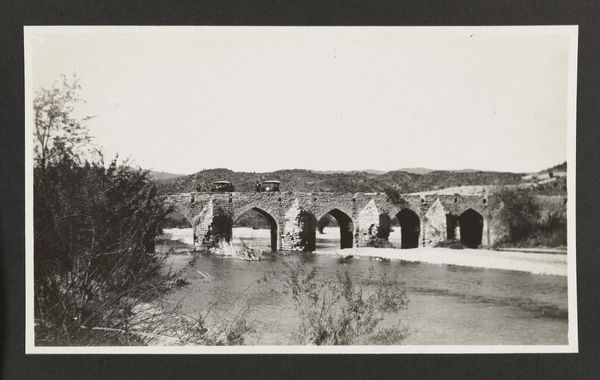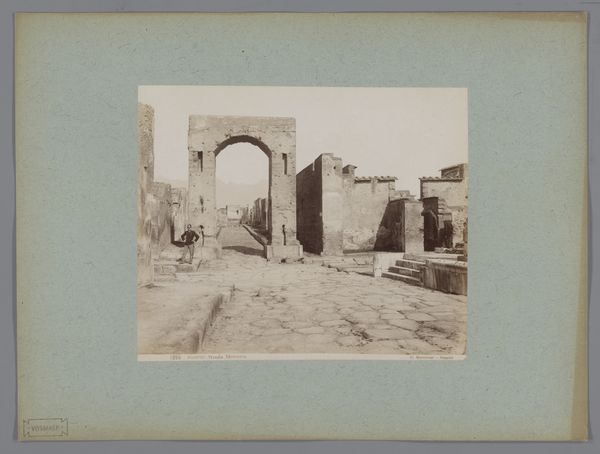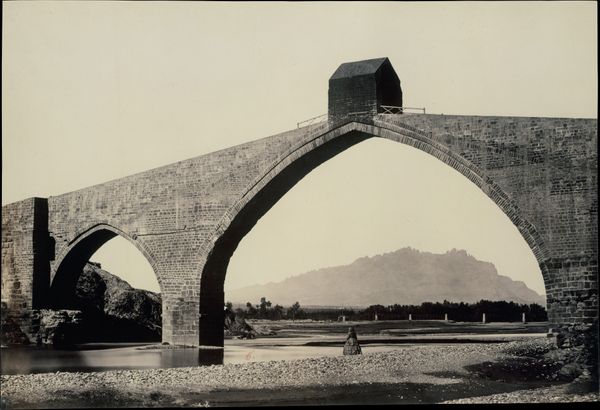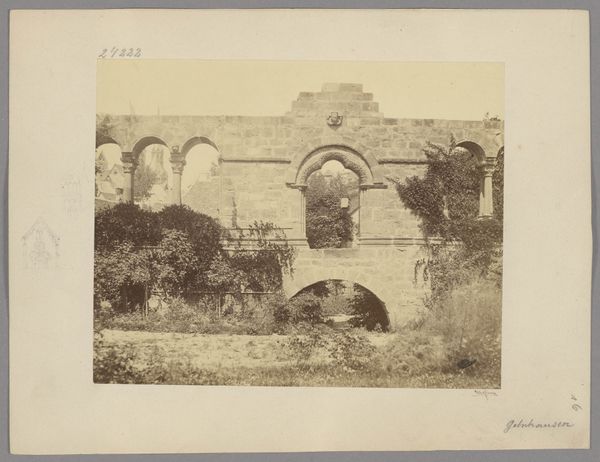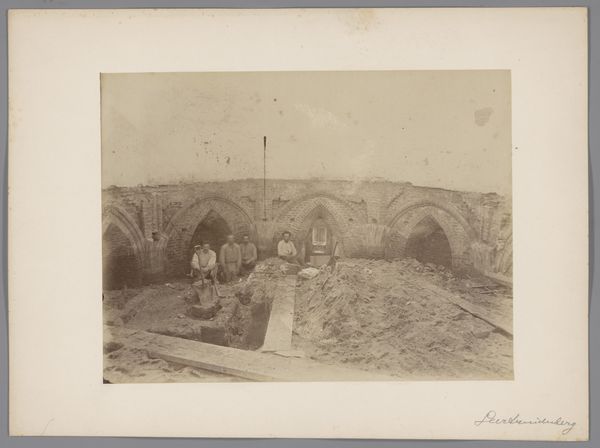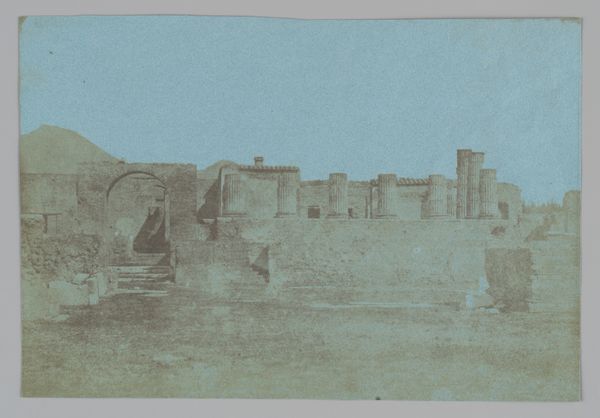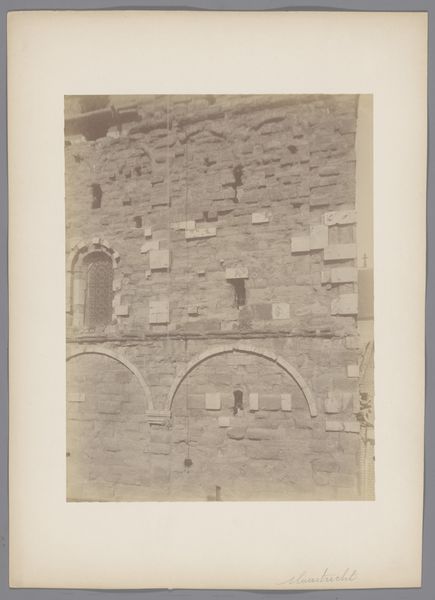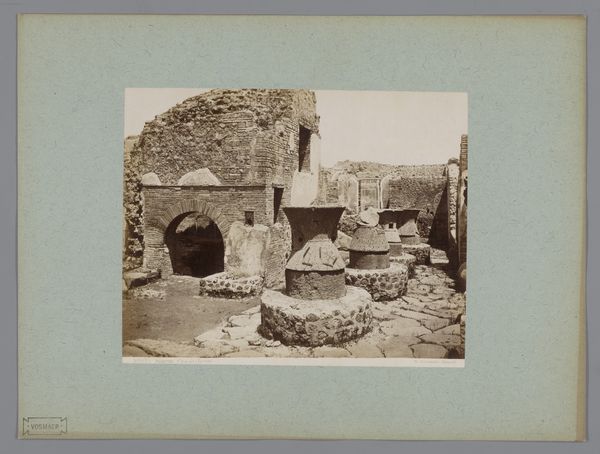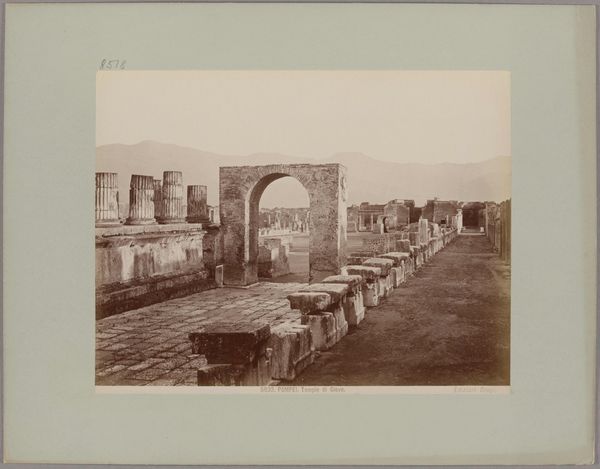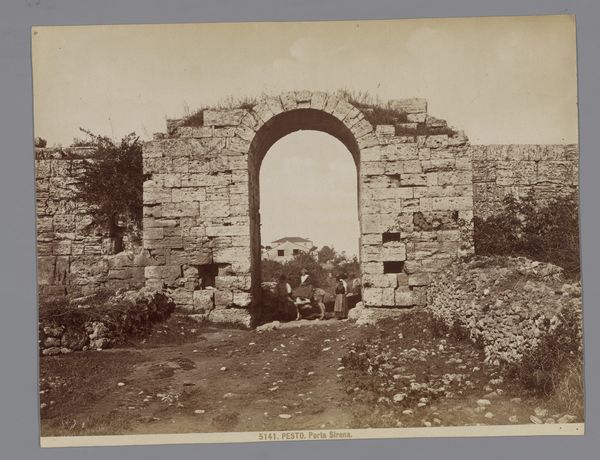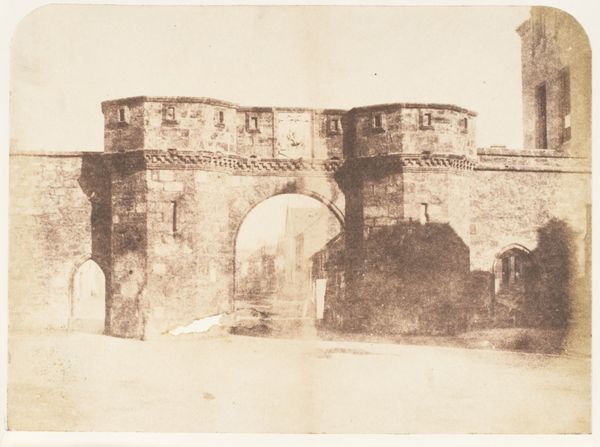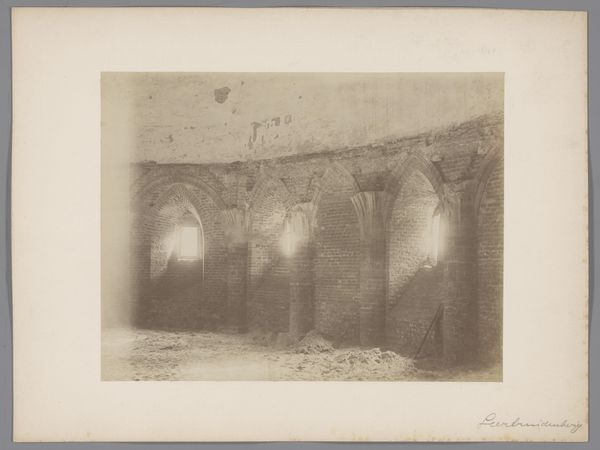
Landschap met rivier waarover een brug; heuvels op de achtergrond, Iran c. 1880 - 1910
0:00
0:00
print, photography
# print
#
landscape
#
photography
#
orientalism
Dimensions: height 98 mm, width 175 mm
Copyright: Rijks Museum: Open Domain
Editor: So, this photograph is titled "Landscape with River and Bridge, Iran," taken by Antoine Sevruguin, sometime between 1880 and 1910. It’s a print, and it really captures a stark, almost desolate landscape. The bridge itself is quite impressive. What can you tell me about how photography like this was viewed at the time? Curator: That's an astute observation about the landscape's mood. Sevruguin's work, categorized under "Orientalism," operated within a complex power dynamic. How do you think images like this functioned within the context of Western audiences viewing non-Western cultures? Editor: Well, I imagine many people probably viewed these images as accurate depictions of Iranian life and landscapes. I suppose it’s easy to take photos as neutral documents. Curator: Precisely! The ‘accuracy’ was a selling point, but photographs are never neutral. The photographer chooses the scene, the angle, what to include and exclude. Orientalist photography often reinforced existing stereotypes, shaping perceptions of Iran for viewers who’d likely never travel there. It influenced colonial narratives and the idea of the “other”. The bridge, in that sense, could be viewed as a symbol of connection or equally as a sign of imperial aspiration and control. What does the bridge suggest to you in light of that idea? Editor: Hmm, I see what you mean. Now looking at the photograph, I wonder if Sevruguin intentionally framed the bridge to seem almost imposing within this vast landscape. It gives a sense of Western presence, even dominance. This is really interesting to think about, how photography can carry such a loaded cultural perspective. Curator: Indeed. Understanding the historical and political context is key to deconstructing these seemingly straightforward images. I think, we are forced to reckon with photography's undeniable influence in shaping cultural narratives, right? Editor: Absolutely, and I’ll definitely look at similar photographs with a much more critical eye moving forward! Thanks.
Comments
No comments
Be the first to comment and join the conversation on the ultimate creative platform.
